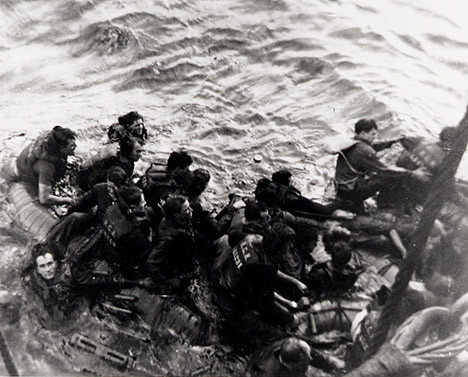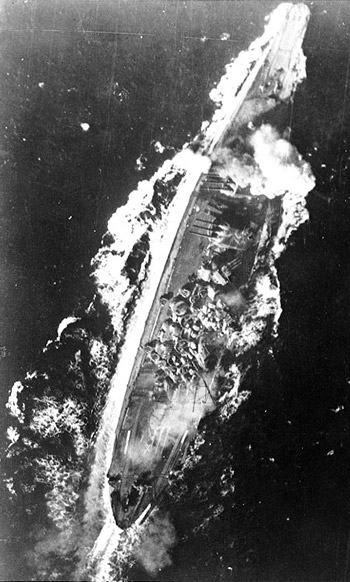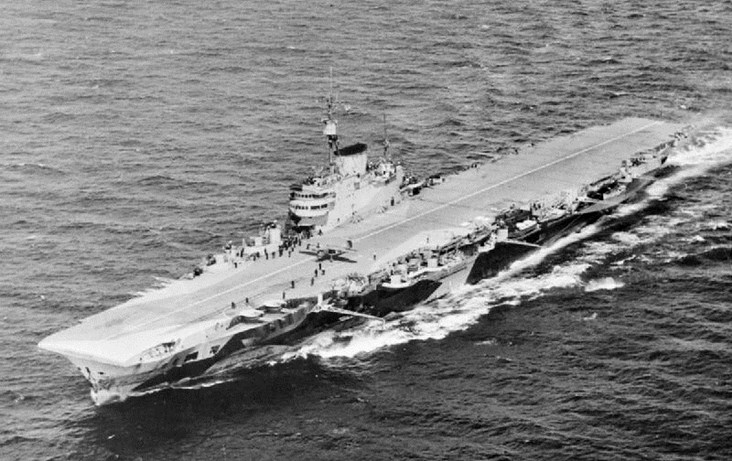The War at Sea
By Francis E. McMurtrie
The War Illustrated, Volume 8, No. 201, Page 647, March 2, 1945.
It is a truism to say that modern warfare depends entirely upon supplies of oil being plentiful. Ships, aircraft, tanks and transport all rely for propulsion upon petroleum in a more or less refined form. Nowhere is this fact better exemplified than in the Far East. One of the reasons which deterred the Japanese from risking war with the United States at a much earlier date was the lack of mineral oil deposits in the chain of islands which constitute Nippon. Similarly, it was the abundance of petroleum in the East Indian archipelago which made that area such an attractive target for Japanese invasion.
Now that the tide has turned and the enemy is slowly but surely being expelled from island after island, the oil problem is bound to be a main factor in hastening Japan's downfall. In the millions of tons of shipping destroyed by Allied submarines and aircraft, oil tankers have figured prominently. As a consequence, there are no longer enough of these valuable vessels to transport to Japan in adequate quantities the petroleum that is needed to keep the war going. For the time being, no doubt, the stocks previously accumulated in Japan may suffice, but a future shortage seems inevitable.
To conserve home supplies as far as possible, oil has been refined near the places where it is produced, so that ships and aircraft might take in their fuel at bases in the East Indies. It will be remembered that the bulk of the Japanese fleet which took part in the Battle of the Philippines last October came not from Japan, but from Indo-China and Borneo. Undoubtedly it had been based on those regions with a view to the conservation of oil supplies, despite the obvious objections to dividing forces in this way. As a result, the fleet arrived on the scene of battle in three detachments; it could not therefore concentrate its full strength in one blow, and so was defeated.
Safety of Vital Oil Refineries A Very Real Worry to Japan
It is clear that one of the weakest features in the enemy's oil situation is the fact that most of the crude oil has to be refined before it can be utilized. This work has been carried out at a number of refineries in Sumatra, Java and Borneo; it may be assumed that every effort has been made by the Japanese to extend the capacity of these installations. By far the biggest of them are at Soengei, Gerong and Pladjoe, close to Palembang, in Sumatra, which had a combined capacity of over 60,000 barrels daily before the war. Another important refinery is at Pangkalan, Brandan, in the north-east of the same island, with a pre-war output of 12,000 barrels a day.
On December 20, 1944, British naval aircraft of the East Indies Fleet were ordered to attack the Pangkalan Brandan refinery, but low cloud over the target prevented this from being done. Bombs were dropped instead on the harbour and shipping at Belawan Deli, where oil and petrol tanks were ignited. A second attempt on January 4, 1945, was more successful, bombs and rockets being showered on the refinery, most of the buildings of which were set on fire.
Three weeks later, on January 24, a heavy attack was launched on the Pladjoe plant. It was found to be defended by large numbers of Japanese fighters, an inner and outer ring of anti-aircraft batteries and an extensive balloon barrage. Fighters were first encountered by our carrier-borne aircraft some miles short of the target. Al least 13 and probably 19 of the enemy planes were shot down, while 34 more were destroyed and about 25 damaged on the airfields around the refinery.
 Survivors from H.M.C.S. Clayoquot – a minesweeper torpedoed and sunk in the North Atlantic in January 1945 – climbed aboard the Canadian corvette Fennel, from rubber dinghies. Eight of her complement of 81 were missing. The Clayoquot was the third Canadian minesweeper and the 20th Canadian warship to be lost in this war. Photos, Canadian Official
Survivors from H.M.C.S. Clayoquot – a minesweeper torpedoed and sunk in the North Atlantic in January 1945 – climbed aboard the Canadian corvette Fennel, from rubber dinghies. Eight of her complement of 81 were missing. The Clayoquot was the third Canadian minesweeper and the 20th Canadian warship to be lost in this war. Photos, Canadian Official
On January 29, Soengei Gerong, the bigger of the two plants, was dealt a heavy blow, the attack being pressed home in spite of the balloon barrage and heavy anti-aircraft fire. Many of the principal buildings received direct hits, and were afterwards set on fire through the adjacent oil reservoirs igniting. One particularly violent explosion shook our aircraft at height of 3,000 feet. There was less fighter opposition than on Jan. 24, the enemy evidently having been unable to replace the losses then suffered. At least 12 and probably 15 Jap aircraft were accounted for in the air or on the ground.
Attacks on the fleet by enemy aircraft were repelled, six being brought down in flames by British fighters or the guns of the ships. The fleet included four fleet aircraft carriers, the Indefatigable, of 30,000 tons and the Indomitable, Illustrious and Victorious, of 23,000 tons; the battleship King George V, of 35,000 tons; the cruisers Argonaut, Black Prince and Euryalus; and the destroyers Grenville, Kempenfelt and Ursa, all under the command of Rear-Admiral Sir Philip Vian.
It may be assumed other refineries in the East Indies will be attacked in due course. There are at least three in Java: at Theope, Kalantoeng, and Kapoean, with a combined capacity of between 15,000 and 20,000 barrels; an important one at Miri, in Sarawak; and a very big one at Belikpapan, in South-East Borneo, which has been bombed at least twice by U.S. naval aircraft in recent months. Its pre-war capacity was 35,000 barrels daily; it may be greater today.
Unless the Japanese can repair these refineries very quickly, or re-establish them underground, their ability to provide enough refined oil fuel for the navy and mercantile marine – to say nothing of high octane spirit for aircraft – will soon be at an end. From the reconquered bases in the Philippines the United States Navy is already ranging far to the southward. Air attacks will inevitably be followed by naval bombardments where necessary, and in due course Allied troops will be landed to occupy strategic positions for use of bases for further advances. It has been estimated that Japan may have an army of 250,000 in the Netherlands East Indies, but this force has had to be scattered over various islands to hold the conquered peoples in subjection, and is thus liable to be overcome in detail.
Destruction of Japanese Fleet May Now be Regarded as Certain
What part the British Pacific and East Indies Fleets will plat in this programme remains to be seen; but undoubtedly it will be an important one, as the attacks on the oil refineries in Sumatra have already illustrated. Singapore and Hong Kong must eventually be cut off from all communication with Japan, and their fall cannot be averted. The former fortress has been heavily bombed on several occasions by United States aircraft, coming presumably from bases in India or Ceylon; and the great floating dock, salved with such difficulty by the Japanese in 1943, has again been sunk in the channel between Singapore Island and the mainland of Johore, where the naval base is situated. Loss of this dock to the Allies will be offset to some extent by the building of the mammoth new graving dock at Sydney
There is nothing the Japanese can do to arrest the steady crumbling away of their conquests. If their depleted fleet should again sally out to meet the Allies in battle, its destruction may be regarded as certain, dissipating the main defence which the enemy can still muster to guard the homeland of Nippon, so long inviolate. It is scarcely surprising, therefore that the Government, headed by General Koiso, should already be showing signs of decay, which are not likely to be arrested by the replacement of two or three of its less prominent members.
Previous and next article from The War at Sea
The War at Sea
Although U-boats are far from being extinct, there being still some hundreds in service, their area of operations has been greatly reduced. There appear to be none left in the Mediterranean, and they
Index
Previous article
H.M.S. Indefatigable
H.M.S. Indefatigable, Britain's newest Aircraft Carrier, was first reported in action off Sumatra on January 24 and 29, 1945, when battleships and aircraft-carriers of the British East Indies Fleet
Next article
I Was There! - Singapore's Giant Floating Dock Was Our Target
In the great bombing raid on Singapore on Feb. 1, 1945, the 50,000-tons dry dock was sunk – for the second time. Built in Britain and towed in sections 8,000 miles to Singapore, it was sunk by us wh





